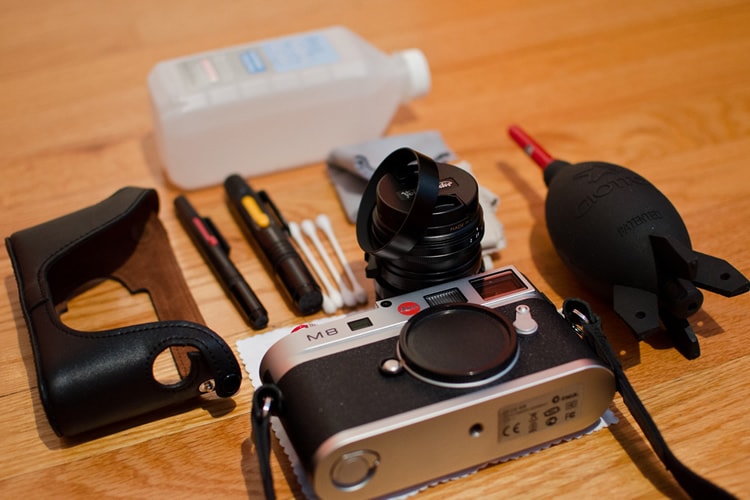How To Take Care Of Your Camera Lenses
If you want to get the best out of your photographic investments, you should know how to properly care for every equipment you have. This is especially true for delicate items like camera lenses.
Camera lenses are big investments because you need to throw some money on them. Most of them do not come cheap. They’re not made of questionable material, either. You use the lenses for various assignments, so if you don’t know how to care for them, they’ll soon become useless. Basic practices like wiping off dust from the lens surface and storing your lenses in durable and protective containers help a lot. But there are other things that you need to take note of.

photo by Rares Dutu
Tips for Camera Lens Care
- Most camera lenses have two lens caps: one for the front and another for the rear. Make sure that the front cap is always on when the lens is not being used. The same goes for the rear cap. Also, as soon as you remove the lens from the camera, immediately put on the caps. This is an essential practice if you want your lenses to help you take good photos. The gold electrical contacts should always be clean.
- Some photographers like to protect their lenses by using a Skylight or protective filter (UV). The filter is placed in front of the lenses. This filter will shield your lenses from elements like dust, smudges, dirt and fingerprints. Your lenses will also be protected in case the camera accidentally hits a hard surface (like a table or wall). Protective filters also shield lenses from weather-related elements. Remove only the protective filter when you plan to use a special effects filter.
- If you feel that placing a protective filter can affect the quality of your photos, put one on an old camera (if you have one) first and then use it to practice. This will give you an idea of what you need to adjust in order to come up with good quality photos even with a protective filter.
- Always have a clean damp cloth in your camera bag. This will be especially useful when you need to change lenses. Use the cloth to wipe off dust from the lens before removing and replacing it. Put on the other lens right away so that dust won’t get to it. Otherwise, put on the camera cap immediately.
- It is also a good idea to have a lens care kit. This is actually better than using damp cloth alone. The kit contains a two-sided brush that looks like a paintbrush. One end of the brush is a foam eraser that you can use to remove smudges from the lenses.
- Aside from the brush, the kit also contains a cleaning solution, cotton swabs, a special kind of cloth for lenses and bulb blowers (which pushes air over the lens).
- Do not use generic cleaning solutions for your filter. There are solutions made especially for camera filters and lenses, such as the ones that are found in lens care kits. Generic cleaners may only harm your filters and lenses with scratches.
- If you plan to bring your camera when traveling, especially by car, put everything in a hard case if you can. The case should be placed on the car seat, not on the floor, where it will absorb all the engine vibrations and shocks.
- When it comes to proper camera lens storage, there are a number of things you need to consider. As previously mentioned, the camera bag should be hard cased if possible. This offers a lot of protection. Some photographers even place their cameras inside a solid pouch before putting them inside the bag. Others wrap their cameras with a lint-free material to keep away dust and reduce scratches.
- Choose a camera bag with partitions so that it will be easy to store your extra lenses and equipment. There are also camera backpacks with long straps and multiple compartments that you can use, especially when traveling.
- Place your camera bag or case in an area that is not directly hit by sunlight. It should also be far from heating radiators. Do not store your camera bag in a damp area or room.
- Your camera lens filter should also be properly stored. Use a plastic container that’s hard-sided for this purpose. If you do a lot of moving and traveling, though, it is recommended that you use both a hard case and a soft case for your filters. The hard case is for storing the lenses in your hotel room, while the soft case is for carrying the filters wherever you go.
- If you live near the sea or if your place is humid, dump or moist, invest in a digital cabinet, as this is the best way to protect your lenses from harmful elements like fungus. Lens fungus develops because of dust, moisture and lack of light. A digital cabinet is temperature-controlled, so your cameras, lenses and filters will be safe inside. If you can’t afford a digital cabinet, make your own “dry box”. Buy an inexpensive, airtight and see-through plastic container, and put some silica gel. The larger the DIY dry box, the more camera equipment you can place.
- Finally, take care of your camera and lens. Watch what you’re doing and always have a firm grip on your equipment. As obvious as it may seem — don’t drop the camera or the lenses. You may still be able to use your equipment after dropping it, but chances are some of your stuff may be damaged – and we all know photography gear can be expensive.
How to Clean Your Lenses

photo by Zhao !
Here are three steps for cleaning your lens.
- Release the lens gently. Depending on your camera type or brand, there might be a release button you can use for this function.
- Use your blower (in the lens care kit) and blow off all the dirt and dust on the lens.
- Use a cleaning tissue to apply lens fluid.
- Gently wipe the lens. Your direction should go toward the center of the lens.
- Slowly re-attach the lens. Put on the lens cap if you are not going to use the camera or lens after cleaning.
Taking care of your camera lenses will increase their value and durability. More importantly, it will help you come up with good quality photos that tell the stories you want the world to know.
